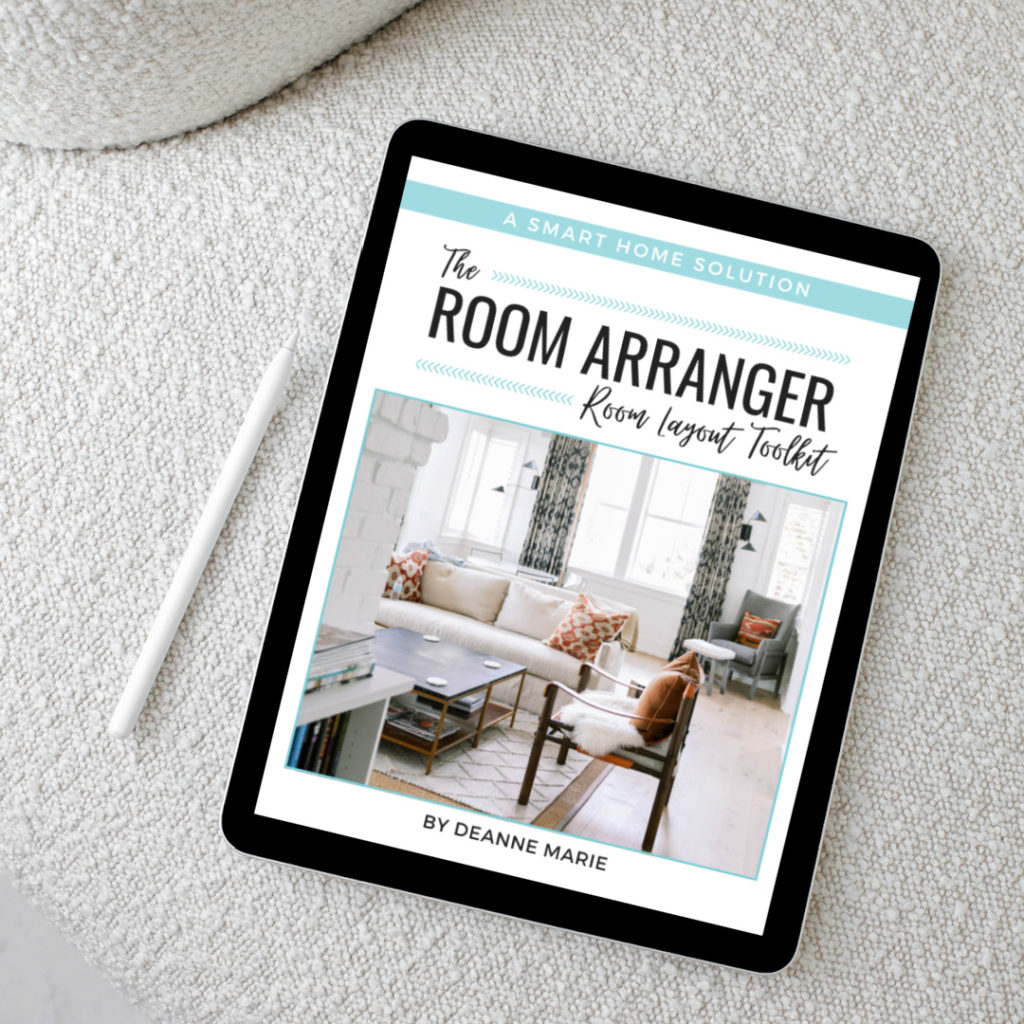
Updating the look and feel of a room doesn’t need to take a lot of time or effort. Just like a mini facial or a chair massage, a quick room refresh can do wonders!
When decorating your home, you can make an enormous difference in a room with little to money and just 15 minutes at a time. I’m currently working on my summer decorating plan, inspired by writing this post. I don’t have a ton of time to spend, so I need to get a lot of bang for my time buck, and these tips are designed for just that.
Without further ado, here are seven ways that you can start to refresh your entire home. Try one or two or all seven and see what a difference you can make!
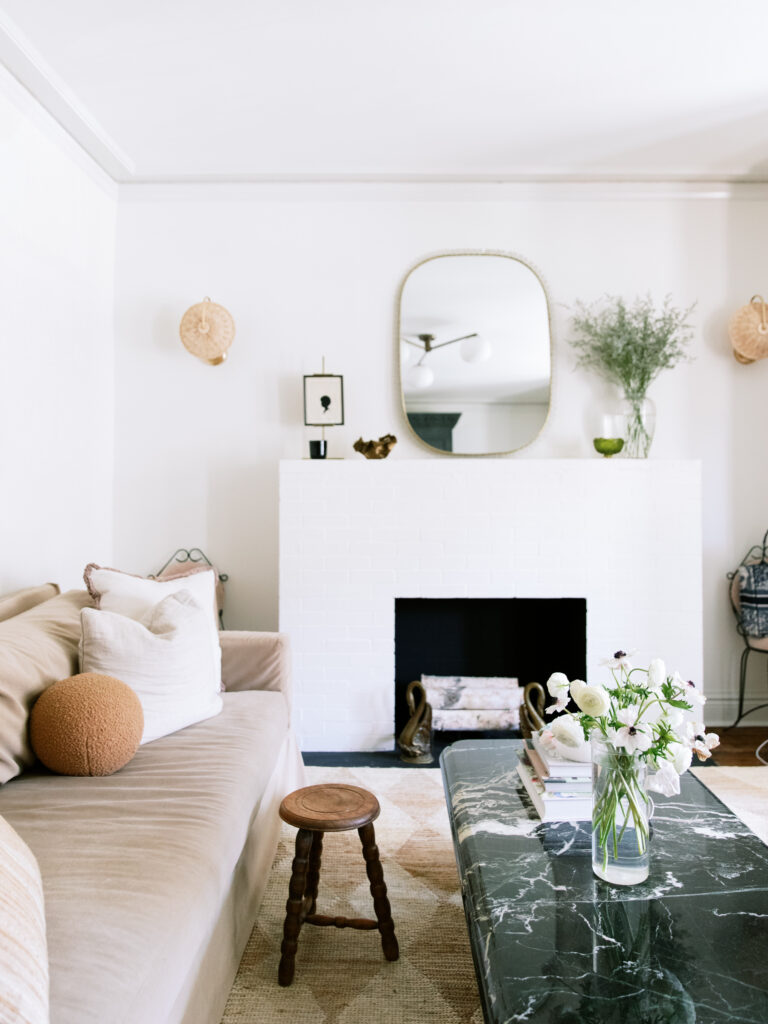
1. Clear away clutter
Sometimes refreshing a room is like the old adage, “you can’t see the forest for the trees.” Meaning, there’s just too much stuff in the way of seeing the room, its features and furnishings. Nearly every decorating plan starts with cleaning and decluttering—removing anything that is not used frequently, belongs somewhere else, or gets in the way of the room’s purpose. It could even be something you no longer love or doesn’t seem to fit in the room.
Examples might include shoes, toys, magazines, papers, clothes, dishes and glasses, or even furniture. Look at your room with an objective eye. What really doesn’t belong there? Unless you belong on a show about hoarding, chances are if you slow down and look at the room from a new, fresh perspective, you’ll see lots of items that can be removed. Sometimes we just get comfortable with all the stuff. Pare it down and let the room breathe.
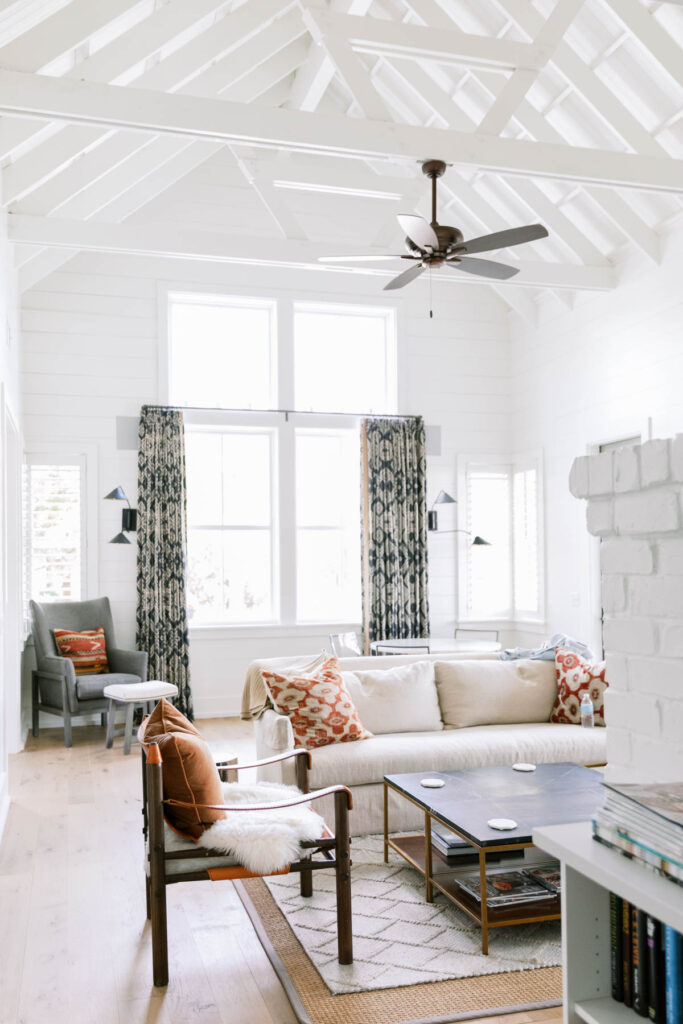
2. Lighten up
Light is one of the most overlooked elements of interior design, and yet it’s one of the easiest to acquire and manipulate.
Light makes a room feel larger, brighter and fresher, so take some time to assess the lighting situation in your room. If the room has a window, wash it inside and out to let in more sunshine. Open any shades or blinds during the day to maximize natural light. If there are window treatments, are they too heavy, dark, or outdated for the room? Just taking down drapes—even if you don’t have anything to replace them with just yet—can have a dramatic impact on a room.
Then look at the light fixtures and lamps in the room. Is there enough light to move around the room at night, or if there are no windows? If not, add more lamps to the mix. Check the maximum wattage stated on each fixture and lamp, and install higher wattage bulbs to bring in more light.
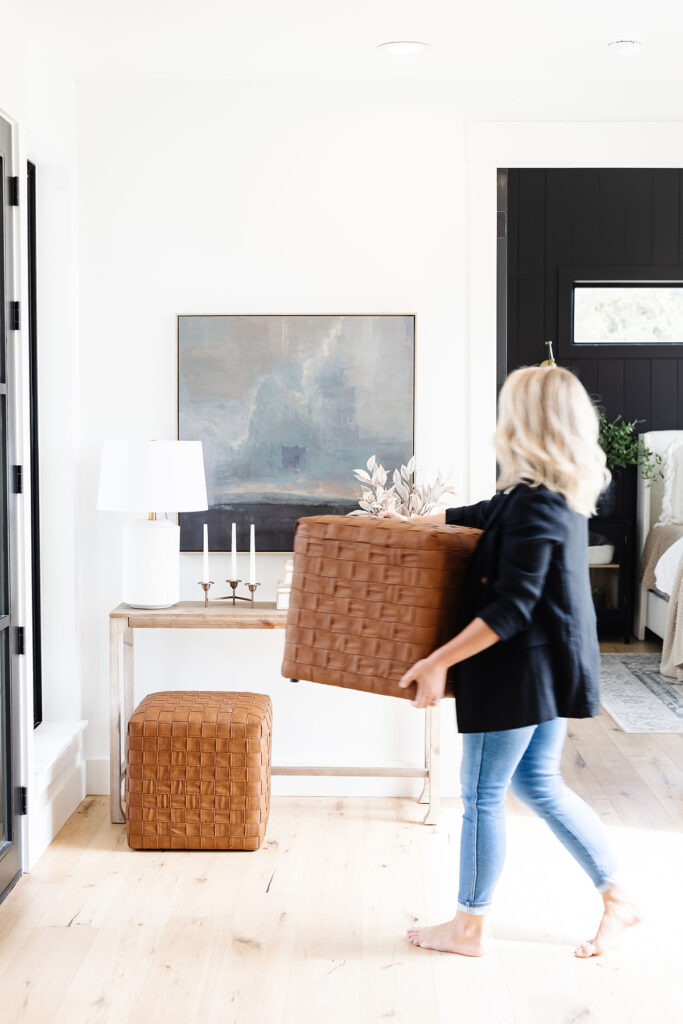
3. Rearrange the furniture
Arranging furniture in a room is a lot like a puzzle. And once we think we have it figured out, we keep it that way. For years. (I’ve certainly been guilty of this!)
But what if there was a different way? Switching up the furniture arrangement can shift the feeling of a room in an instant. The first time I had a feng shui consultation many years ago, the consultant moved around the family room furniture in a way I’d never thought of, and it definitely shifted the feeling of the room.
Before you start moving anything, play with the arrangement on paper. Create a scale drawing of your room on a piece of graph paper, measuring the walls and noting any doorways and windows. Then measure and draw shapes to represent the furniture pieces and place them on the room drawing, playing with different layouts until you find one that feels right. (Try my Room Arranger toolkit to make this easy!) Pay attention to traffic patterns and how the room is used, and try to create “zones” for each use.
And, it may be that the current arrangement is the best for the room, and that’s great! At least you’ve looked at other options.
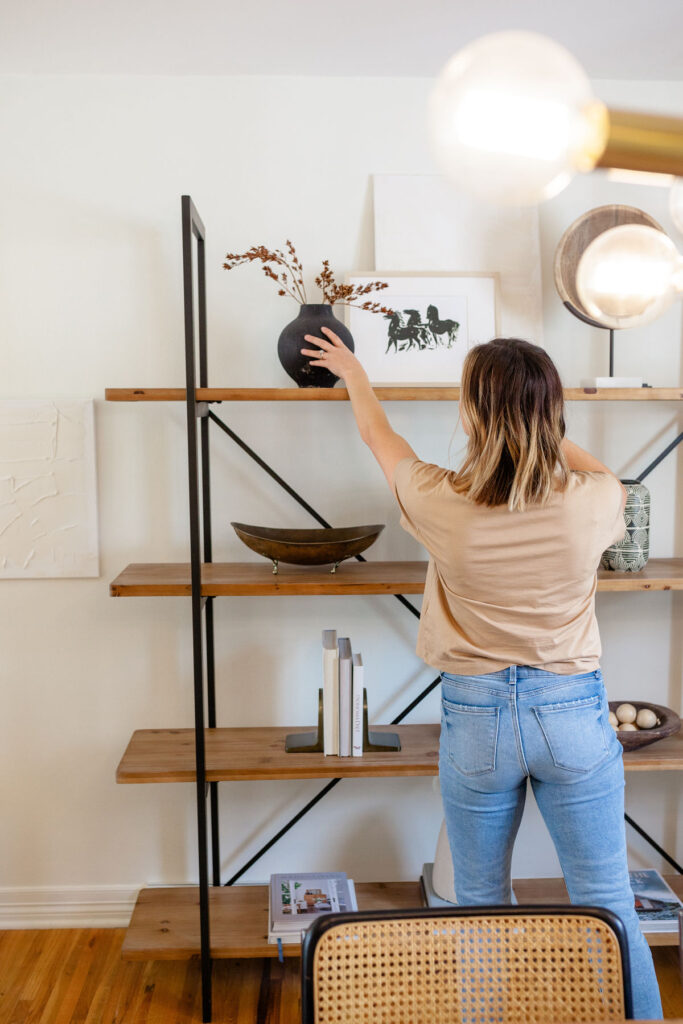
4. Curate your collections
Have you noticed most of these tips so far have been fast and free? #4 follows that lead with a “use what you have” approach to accessorizing your room.
Shop your house for accessories—objects, candle holders, vases, picture frames, figurines—that have a common, unifying theme or motif. Maybe they’re all red, or they’re all ducks or apples or sailboats. Chances are there’s a collection of something hiding in plain sight around your home. Bring everything together and arrange them on a shelf, mantel, side board, or console.
Displaying similar items together gives them more presence and makes the room more personal.
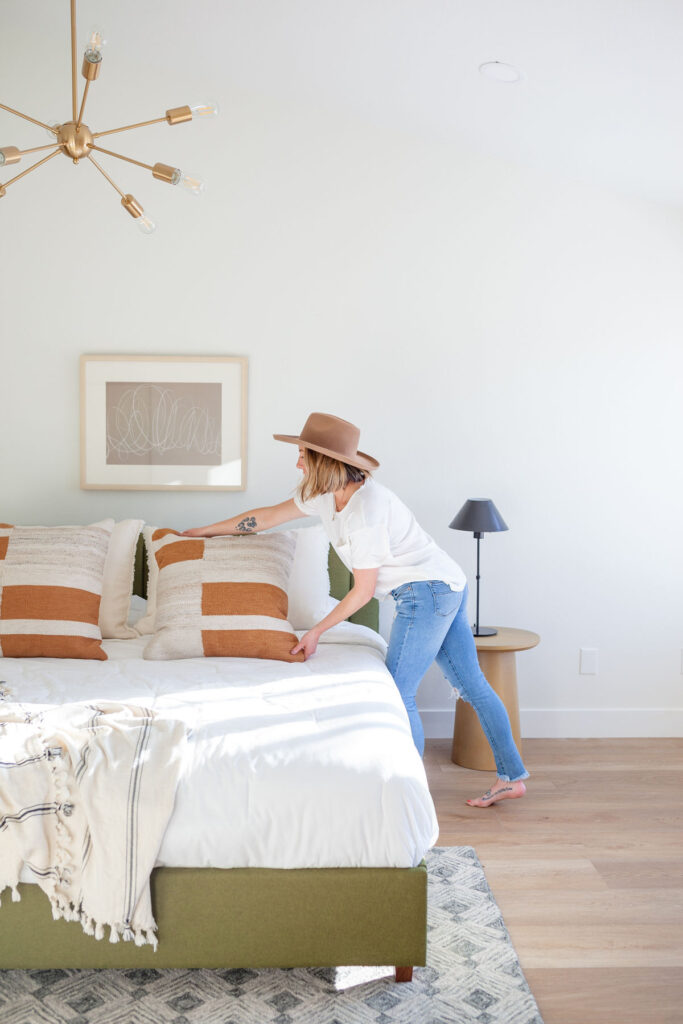
5. Update with textiles
One of the easiest and fastest ways to change the entire look and feel of a room is with fabrics.
Look around your room. What fabric elements could be changed, either by bringing in something new or swapping them with something from another room?
Think about:
- Drapes
- Area rugs
- Toss pillows
- Slipcovers
- Throws
- Table coverings
As a bonus, updating the textiles also means bringing in new (or more) color, texture, and/or pattern. This year I’m splurging on new, crisp white linens for the bed, mixing and layering textures for interest.

6. Add life, literally
Live, leafy green and/or blooming houseplants are great additions to nearly any room. Their green color is automatically calming to the eye, and they produce oxygen. Plus, they are relatively inexpensive and can easily fill a large area—like an empty corner— if need be. Or, opt for one or two smaller plants placed around the room. If you don’t have much of a green thumb, ask your florist to suggest a hearty variety, or add a self-watering tube like an Aquaglobe®.
Fresh cut flowers are also a great decorating secret. Their color, life, texture and fragrance can be elegant or fun, indulgent or whimsical. And since most supermarkets sell flowers, it’s convenient, too! Try these tips to make your blooms last longer.
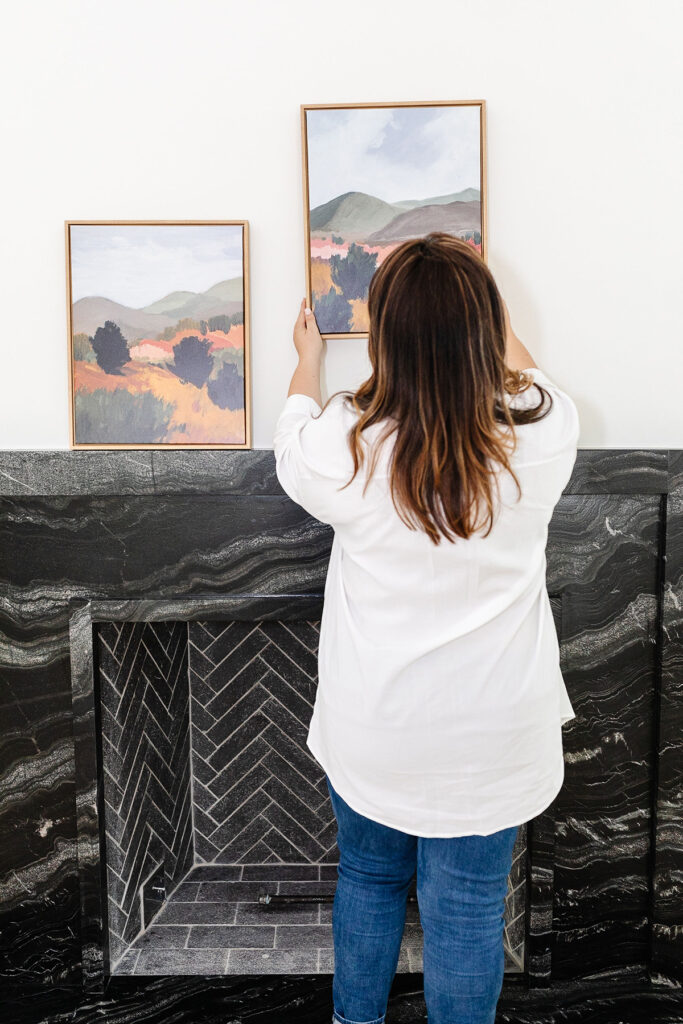
7. Alter the art
Art can set a mood, reinforce a theme, or be just plain wonderful to behold. Like light, art is often an afterthought in a room’s design plan, but it deserves much more attention.
Art is also fairly easy to swap from room to room and season to season. Think of your rooms like a gallery with an ever-changing collection. Look around your room. Does it currently have or does it need some art? Is there a focal point piece, for example over the bed or fireplace? If so, is there another piece in the house that could be traded out to give the room a fresh look?
Here’s a quick and easy seasonal tip: Use the same frame and mat, but swap out the image. I’ve gotten a lot of mileage from some simple silver frames in the guest bath, with a rotating display of everything from calendar pages to greeting cards and trip photos to scrapbook paper.
One final tip about art: Be sure to hang it at eye level. Not too high and not too low, although most folks hang their pictures much too high. Look at magazines and home catalogs to get a feel for placement. If there’s any doubt about how high to hang something, make a template of the art piece with some newspaper or kraft paper and tape it to the wall, then stand back. How does it look and feel in comparison to what you’ve seen in magazines or on design shows? As a general rule of thumb, the top of the frame should about 6 feet from the ground.
I hope one or more of these tips is helpful to breathe some new life into your space!
(All images in this post are from Social Squares.)


 Hi! I’m Deanne Marie – designer, author, attorney, travel enthusiast and everyday goddess. I love showing other single professional women how to create a home that is as comfortable as it is stylish, and have joy-filled, everyday goddess kind of life.
Hi! I’m Deanne Marie – designer, author, attorney, travel enthusiast and everyday goddess. I love showing other single professional women how to create a home that is as comfortable as it is stylish, and have joy-filled, everyday goddess kind of life.